Philharmonic Hall of Szczecin wins 2015 Mies van der Rohe Award
By Bustler Editors|
Monday, May 11, 2015
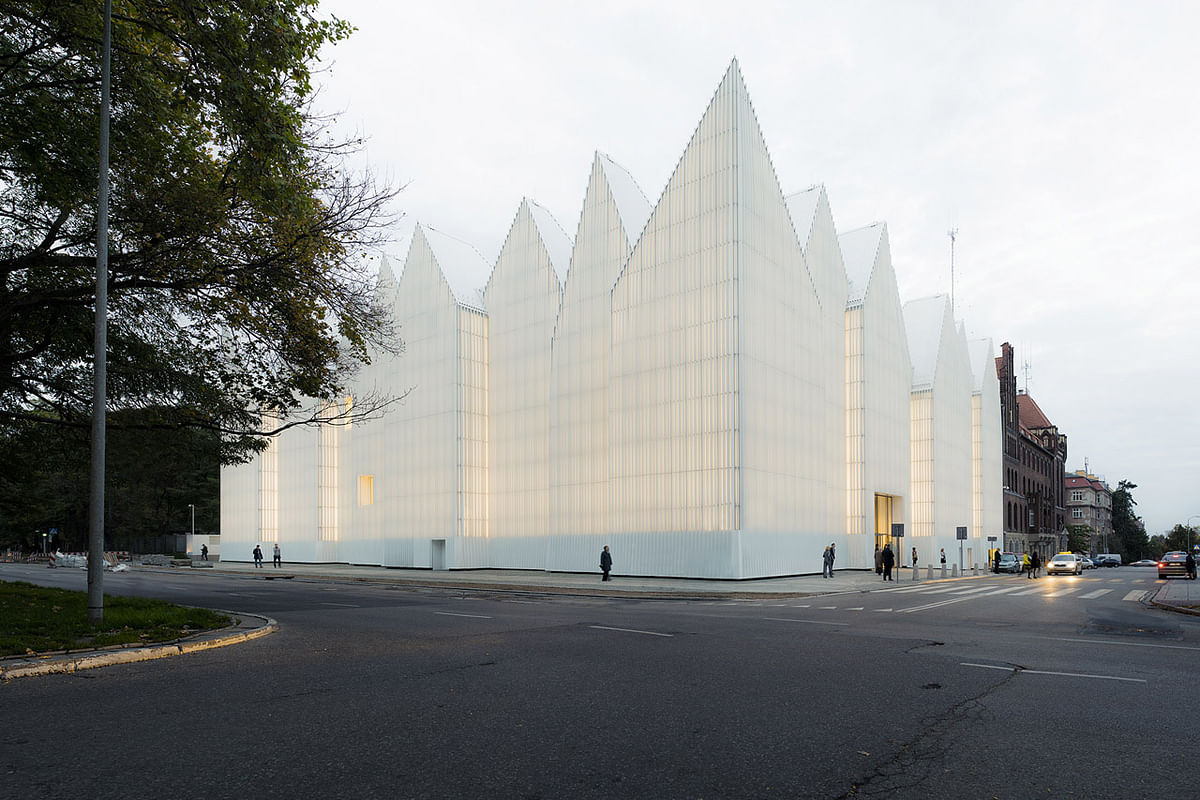
Related
The Philharmonic Hall of Szczecin in Szczecin, Poland by Barozzi / Veiga was revealed as the 2015 winner of the European Union Prize for Contemporary Architecture – Mies van der Rohe Award. Initiated in 1987 by The European Commission and the Fundació Mies van der Rohe, the biennial €60,000 prize is one of the highest-ranking prizes in European architecture. It highlights projects less than 2 years old that best represent the prize's mission of design and technological innovation, and noteworthy contributions from architects across the continent.
Starting from a competitive pool of 420 projects down to 40, the jury selected the Philharmonic Hall out of five finalists.
More details about the project below.
Project description:
"The new Philharmonic Hall of Szczecin is located on the historical site of the "Konzerthaus" and recomposes an urban corner in a neighborhood near to the historic city. The building houses a symphony hall for 1000 spectators, a hall for chamber music for 200 spectators, a multifunctional space for exhibitions and conferences, and a wide foyer. In its materiality, the building is perceived as a light element: the glass facade, illuminated from inside, allows different perceptions. The exterior austerity and the simple composition of the interior circulation spaces contrast with the expressiveness of the main hall and the concert hall with its gold-leaf covering."

"The new Philharmonic Hall of Szczecin is located on the historical site of the "Konzerthaus", which was destroyed during Second World War and recomposes an urban corner in a neighborhood near to the historic city. The building houses a symphony hall for 1000 spectators, a hall for chamber music for 200 spectators, a multifunctional space for exhibitions and conferences, and a wide foyer, which can also be used to host events."
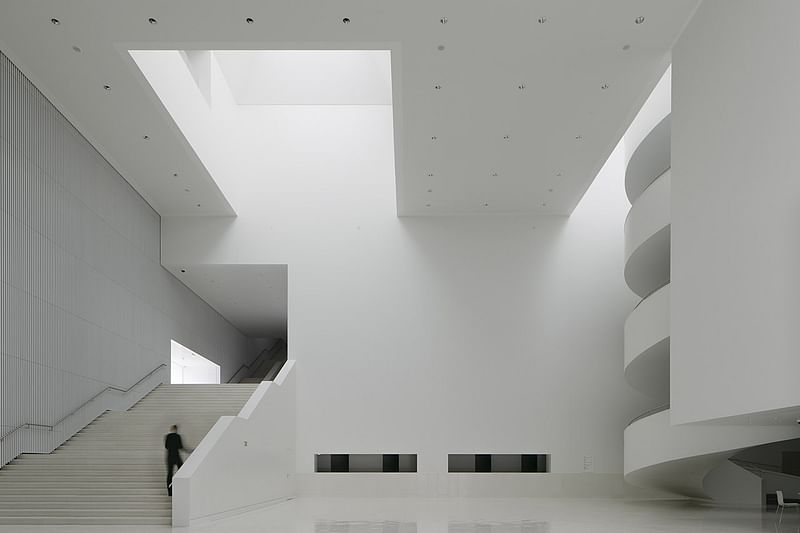
"The building is configured by a synthetic, but at the same time complex volume, which is resolved through a continuous promenade, which connects all these functions along a single public path through all the levels of the building. Externally, as in the adjacent pre-existence, the verticality and geometry of the roof prevail. These characteristics identify the Philharmonic Hall with its surrounding context. The plan composition is defined by a perimetral ring."
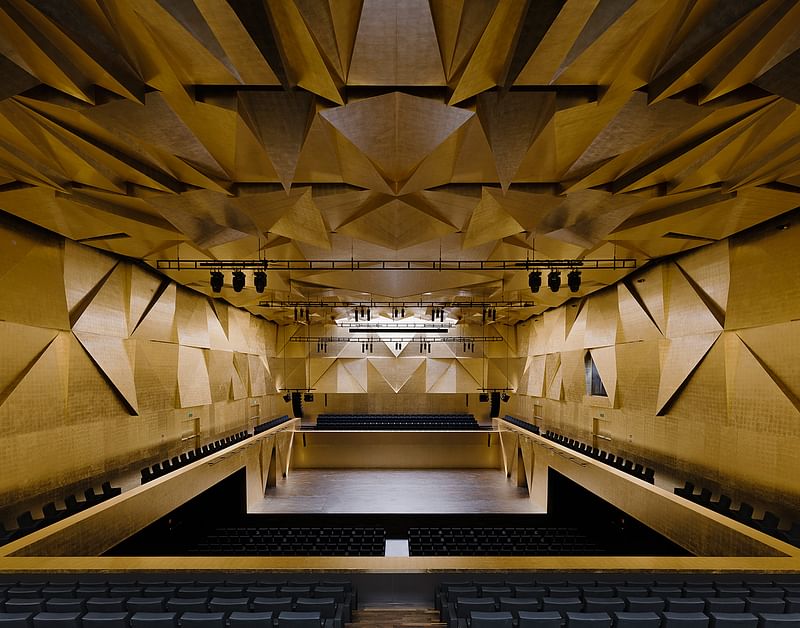
"This element mostly hosts service spaces. On the one hand this allows to define a large void within which gravitate the symphony hall and the hall for chamber music, on the other hand to shape the relationship of the building with its surroundings. The serial modulation of the roof represents the only other expressive element, that permits the integration of the building within the fragmented urban profile of the city."
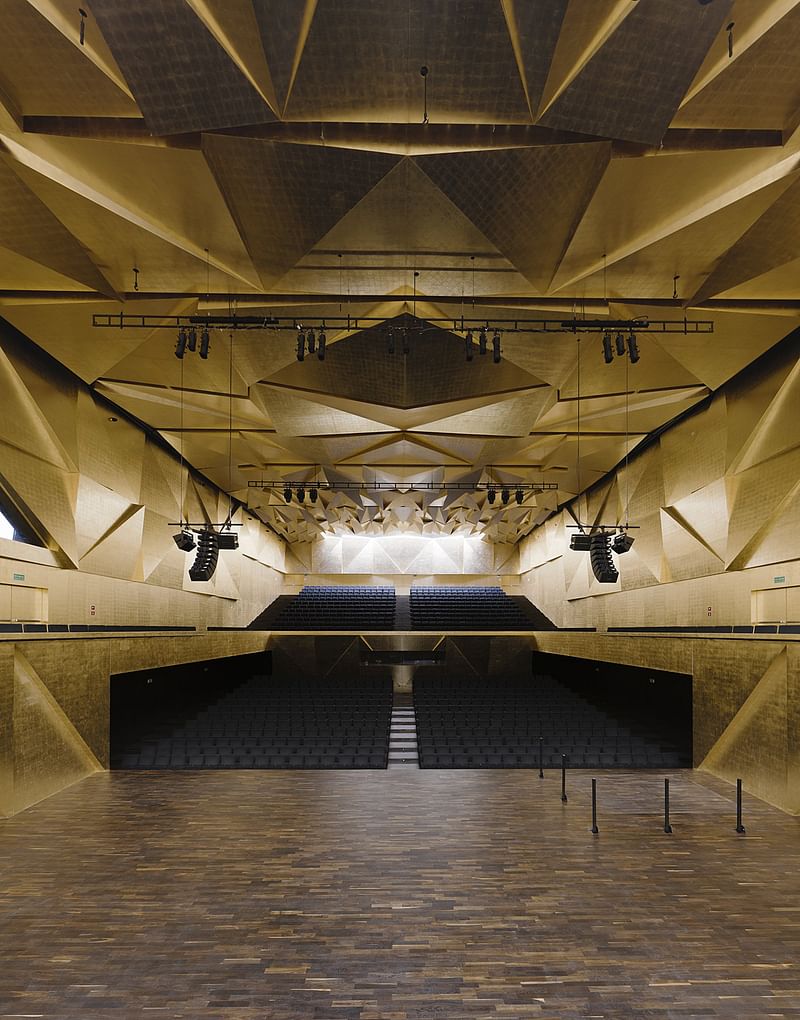
"In its materiality, the building is perceived as a light element: the glass facade, illuminated from inside, depending on the use allows different perceptions. The exterior austerity and the simple composition of the interior circulation spaces contrast with the expressiveness of the main hall. In accordance with the central European tradition of the classical concert halls, decoration becomes ornament and function. The hall is composed following a Fibonacci sequence whose fragmentation increases with the distance from the scene, and gives shape to an ornamental space which reminds of the classical tradition through its gold-leaf covering."

"The building predominantly adopts passive systems of energetic control. The main element is the double skin façade channeling a large part of the installation system to provide a global acoustic insulation and a natural ventilation to avoid overheating. Illuminated by a LED system, it turns the building in a glowing volume with a minimum energy consumption. The roof cladding is a multilayered pack, with differences over the concert hall than other zones, to optimize acoustics and thermal insulation."
Previous winners include the Harpa, the Reykjavik Concert Hall and Conference Center in Iceland, the Neues Museum in Berlin, Germany by David Chipperfield Architects in collaboration with Julian Harrap and the Norwegian National Opera & Ballet in Oslo, Norway by SNØHETTA.
2015 Jury:
Practicing architects:
- Cino Zucchi, Chair of the Jury Principle, Cino Zucchi Architetti, Milan
- Margarita Jover Principle, aldayjover architecture and landscape, Charlottesville and Barcelona
- Lene Tranberg Principle, Lundgaard & Tranberg, Copenhagen
- Peter L. Wilson Principle, Bolles + Wilson, Münster
Architecture Critic
- Li Xiangning Deputy Dean, College of Architecture & Urban Planning, Tongji University, Shanghai
Architecture Critic and Representative of the Prize Steering Committee
- Tony Chapman Head of Awards at RIBA, London
Upholder of high quality architecture as a Client
- Hansjörg Mölk CEO MPreis, Völs, Tirol
Secretary of the Jury (without the right to vote)
- Giovanna Carnevali Director Fundació Mies van der Rohe, Barcelona
Coordinator of the Prize (without the right to vote)
- Ivan Blasi Architect
More project images in the thumbnail gallery below.
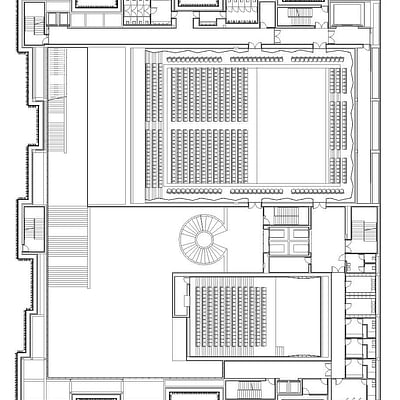


Share
0 Comments
Comment as :